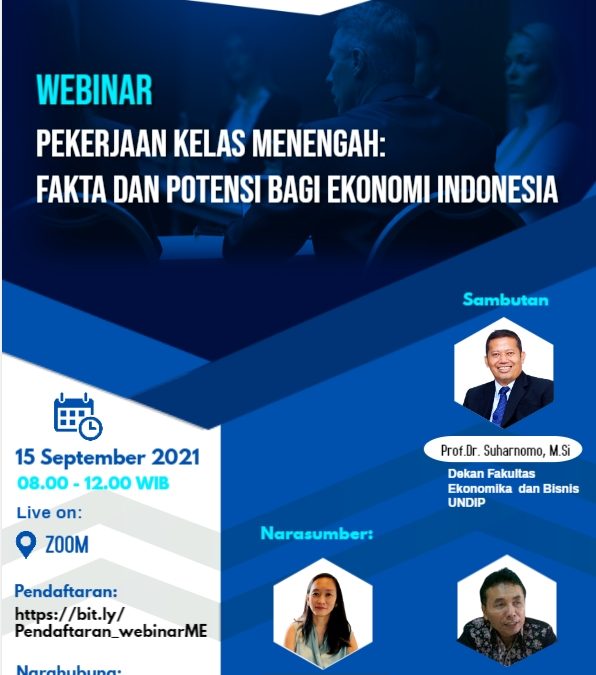Not long ago, Indonesia was again downgraded to a lower middle income country. This fact is certainly a big challenge for Indonesia after in 2019 it managed to rise to the status of an upper middle income country. The World Bank in its report which is updated every July reports that this decline in status occurred due to the decline in Gross National Income (GNI) per capita in 2020. In 2019 Indonesia’s GNP per capita was 4,050 US dollars, down to 3,870 US dollars in 2020. This decline was caused by the impact of the Covid-19 pandemic which caused the Indonesian economy to contract -2.07 percent in 2020. Bappenas itself before the pandemic projected that Indonesia’s per-capita income could reach 4,500 US dollars in 2020.
Conceptually there are multi-factors that determine the level of per-capita income of a country, one of which is the existence and quality of middle class jobs. In this regard, the World Bank specifically produced a report released in June 2021 entitled: Steps Towards Middle Class Employment in Indonesia. In the report it is stated that although large jobs were created in the period 2009 – 2019, Indonesia has not been able to print middle class jobs to become a middle class country. Almost half of Indonesia’s population is still a candidate for the middle class, where they have managed to get out of the poor and vulnerable groups, but have not yet reached the middle income group. Indonesia needs middle class workers with high productivity in order to make this group into the middle class. The World Bank further highlighted the factors that hinder Indonesia’s transition to middle-class employment.
The existence of middle-class work is even more interesting if it is associated with Indonesia’s labor structure. So far, the general condition of Indonesia’s employment has not been competitive and is not fully ready to support the acceleration of the economic sector. The February 2021 employment profile released by BPS shows that the composition of the working population based on education is still dominated by elementary school and below (37.41%), followed by high school (18.18%), junior high school (18.54%) ), Vocational High School (12.33%), University (10.18%) and Diploma I/II/III (2.74%). Meanwhile, the Open Unemployment Rate (TPT) based on the level of education completed is still dominated by SMK graduates at 11.45%. This is certainly a big challenge because vocational education is designed to be the backbone of job creation. With this composition, it is certainly difficult to accelerate the creation of middle class jobs.
Based on this background, the Master of Economics Study Program, Faculty of Economics and Business Undip held a Webinar series with the theme “Middle Class Jobs: Facts and Potential for the Indonesian Economy”.
This Scientific Discussion Series will be held on Wednesday, September 15, 2021, online from 08.00 – 12.00 WIB.
Acara akan dibuka oleh Prof. Dr. Suharnomo, M.Si selaku Dekan Fakultas Ekonomika dan Bisnis Undip dan dimoderatori oleh Wahyu Widodo, Ph.D selaku Kepala Program Studi Magister Ilmu Ekonomi Undip.
The event will be opened by Prof. Dr. Suharnomo, M.Si as the Dean of the Faculty of Economics and Business Undip and moderated by Wahyu Widodo, Ph.D as the Head of Master of Economics Study Program Undip.
The resource persons in this Scientific Discussion activity are:
1. Maria Monica Wihardja, Ph.D from the World Bank (World Bank)
is a co-author of a World Bank report entitled “Steps to Middle Class Employment in Indonesia”.
2. Prof. Dr. FX. Sugiyanto, from the Faculty of Economics and Business Undip
is a senior economist and advisor to the Central Java Provincial Government.
Participants can register via the following link:
More info:
081228134300

